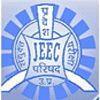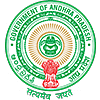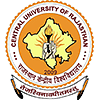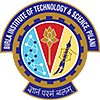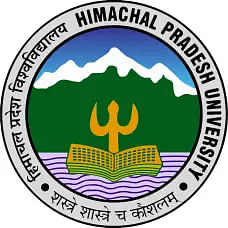
Table of Contents
MAHE OET 2023 syllabus is available on the official website of the Manipal Academy of Higher Education. Candidates can now view MAHE OET syllabus 2023 for the disciplines and themes that must be covered for the entrance examination. Candidates are urged to check and refer to MAHE OET curriculum in order to be well-prepared for the examination.
MAHE OET 2023 syllabus includes units and themes from Physics, Chemistry, Mathematics, and English that are equivalent to those found in the qualifying examinations for the 11th and 12th grades.
The syllabus plays a crucial role for candidates to prepare for MAHE OET, it helps them to plan systematically what to study and what not to study. MAHE OET syllabus is discussed in the section below.
MAHE OET Syllabus
Candidates who have qualified in the exam with the required cut-off will be eligible to apply for counselling. Candidates can know about counselling from MAHE 2023 Counselling. Questions from subjects like physics, chemistry, biology will be based on the syllabus followed by the boards recognized by the government of India.
MAHE OET 2023 Physics Syllabus
The following tabular entails the details syllabus for MAHE OET 2023 Physics
| Physics | |
| Measurement | Physical quantities, errors in measurement, units, dimensions, significant figures, dimensional analysis and error analysis. |
| Kinematics |
Addition and subtraction of vectors, relative velocity, unit vectors, resolution of a vector in a plane, scalar and vector products of vectors, scalar and vector quantities, position and displacement vectors, general vectors and notation, equality of vectors, multiplication of vectors by a real number. Motion in a plane, uniform circular motion, cases of uniform velocity and uniform acceleration – projectile motion. Motion in a straight line: Uniform and non-uniform motion, average speed and instantaneous velocity. Concepts of differentiation and integration for describing motion. Velocity time and position-time graphs, uniformly accelerated motion, and relations for uniformly accelerated motion (graphical treatment). Position-time graph, speed and velocity. |
| Force and Motion |
Examples of circular motion (vehicle on level circular road, vehicle on banked road), centripetal force. Momentum and Newton’s laws of motion, force and inertia. Static and kinetic friction, laws of friction, rolling friction, lubrication.Law of conservation of linear momentum and its applications. Equilibrium of concurrent forces, Newton’s third law of motion, impulse. |
| Work and Energy |
Non-conservative forces, the notion of potential energy, the potential energy of a spring, conservative forces. Conservation of mechanical energy (kinetic and potential energies) Work is done by a constant force and a variable force. Motion in a vertical circle, kinetic energy, work-energy theorem, power. |
| Rotational Motion and Rigid Body |
Values of the moment of inertia for simple geometrical objects. Parallel and perpendicular axes theorems and their applications. Moment of inertia, the radius of gyration. Rotational motions. Centre of mass of the uniform rod. Moment of a force, torque, angular momentum, and conservation of angular momentum with some examples. Centre of mass of a two-particle system, momentum conservation and centre of mass motion. Centre of mass of a rigid body. |
| Gravitation |
Kepler’s laws of planetary motion and gravitational potential. Gravitational potential energy. Escape velocity, orbital velocity of a satellite. Acceleration is due to gravity and its variation with altitude and depth. Geostationary satellites and the universal law of gravitation. |
| Properties of Matter |
Pressure due to a fluid column. Terminal velocity, Reynold’s number, streamline and turbulent flow. Bernoulli’s theorem and its applications. Pascal’s law and its applications (hydraulic lift and hydraulic brakes). Effect of gravity on fluid pressure. Viscosity, Stokes’ law. Elastic behaviour, Young’s modulus, bulk modulus, shear, modulus of rigidity. The stress-strain relationship, Hooke’s law, Poisson's ratio. Elastic energy. Application of surface tension ideas to drops, angle of contact Surface energy and surface tension, excess of pressure, bubbles and capillary rise. |
| Heat and Thermodynamics |
The second law of thermodynamics: Reversible and irreversible processes. Heat engines and refrigerators. Thermal equilibrium and definition of temperature. Heat, work and internal energy. The first law of thermodynamics. Isothermal and adiabatic processes. Degrees of freedom, the law of equipartition of energy and application to heat capacities of gases Kinetic Theory of Gases: Assumptions of the kinetic theory of gases, the concept of pressure. Kinetic energy and temperature, RMS speed of gas molecules the concept of the mean free path, Avogadro’s number. Equation of state of a perfect gas, work done on compressing a gas. Temperature, thermal expansion of solids, liquids, and gases. Anomalous expansion Change of state – latent heat Specific heat capacity: Cp, Cv – calorimetry. Wein’s displacement law and Green House effect Heat transfer – conduction and thermal conductivity, convection and radiation. Qualitative ideas of Black Body Radiation. Newton’s law of cooling and Stefan’s law. |
| Oscillations and Waves |
Longitudinal and transverse waves, speed of wave motion, displacement relation for a progressive wave, standing waves in strings and organ pipes, the principle of superposition of waves, a reflection of waves, fundamental mode and harmonics, periodic motion – period, frequency, displacement as a function of time. forced and damped oscillations, resonance Periodic functions. Simple harmonic motion (SHM) and its equation, phase, free. Doppler effect. Energy in SHM – kinetic and potential energies. Simple pendulum – derivation of expression for its time period. Wave motion beats. |
| Electrostatics |
Electric charges and their conservation, forces between multiple charges. Superposition principle and continuous charge distribution Coulomb’s law – force between two point charges. Electric flux, statement of Gauss’s theorem and its applications to find field due to infinitely long. Electric field, electric dipole, electric field due to a dipole, torque on a dipole in a uniform electric field, electric field due to a point charge, electric field lines. Straight wire, potential difference, electric potential due to a point charge, a dipole and system of charges, uniformly charged infinite plane sheet and uniformly charged thin spherical shell electric potential, equipotential surfaces, electrical potential energy of a system of two point charges and electric dipoles in an electrostatic field. Capacitors and capacitance, dielectrics and electric polarisation, a combination of capacitors in series and parallel, Van de Graaff generator. Conductors and insulators, free charges and bound charges inside a conductor. |
| Current Electricity and Magnetism |
Oersted’s experiment, Biot - Savart law and its application, concept of magnetic field, cyclotron. The force between two parallel current-carrying conductors – definition of ampere, carrying circular loop, magnetic dipole moment of a revolving electron, straight and toroidal solenoids, current loop as a magnetic dipole and its magnetic dipole moment Ampere’s law and its applications to an infinitely long straight wire. Moving coil galvanometer – current sensitivity and conversion to ammeter and voltmeter, bar magnet as an equivalent solenoid, force on a current-carrying conductor in a uniform magnetic field. Force on a moving charge in uniform magnetic and electric fields, magnetic field lines Earth’s magnetic field and magnetic elements, permanent magnets, and torque are experienced by a current loop in a magnetic field. Para-, dia- and ferromagnetic substances, with examples. Electromagnets and factors affecting their strengths. Ohm’s law and electrical resistivity and conductivity. Electrical resistance, electrical energy and power. Potentiometer – Applications to measure potential differences and principles, and for comparing the emf of two cells. VI-characteristics of ohmic and non-ohmic conductors drift velocity and mobility, measurement of internal resistance of a cell. Series and parallel combinations of resistors, the temperature dependence of resistance electric current, the flow of electric charges in a metallic conductor, the internal resistance of a cell, potential difference and emf of a cell, a combination of cells in series and parallel. Kirchhoff ’s laws and simple applications. metre bridge, Wheatstone bridge. AC generator and transformer alternating currents, peak and RMS value of alternating current/voltage. Power in AC circuits, wattles current. Electromagnetic induction; Lenz’s Law, Eddy currents. Self and mutual inductance. LC oscillations, LCR series circuit, resonance, Faraday’s law, induced emf and current, reactance and impedance. |
| Optics |
Wave optics: refraction and reflection of plane wave at a plane surface using wavefronts; Wavefront and Huygens’ principle. Interference, Young’s double-slit experiment and expression for fringe width, Brewster’s law, uses of plane polarised light and polaroids. Coherent sources and sustained interference of light. Laws of reflection and refraction using Huygens’ principle, polarisation. Resolving the power of microscopes and astronomical telescopes. Diffraction due to a single slit, width of central maximum. Lens-maker’s formula, total internal reflection and its applications, optical fibres. Combination of thin lenses in contact combination of a lens and a mirror, refraction at spherical surfaces, lenses, thin lens formula, Dispersion and Refraction of light through a prism. Microscopes and astronomical telescopes (reflecting and refracting) and their magnifying powers. Reflection of light, spherical mirrors, mirror formula. Scattering of light–blue colour of the sky and reddish appearance of the sun at sunrise and sunset. Optical instruments: Human eye, image formation and accommodation, correction of eye defects (myopia and hypermetropia) using lenses. |
| Modern Physics |
Binding energy per nucleon and its variation with mass number, nuclear fission and fusion. Radioactivity particles/rays and their properties, radioactive decay law. Isotones Bohr model, energy levels, hydrogen spectrum; Alpha particle scattering experiment. Composition and size of nucleus, atomic masses, isotopes, isobars. Rutherford’s model of an atom, mass-energy relation, mass defect. Hertz and Lenard’s observations, the photoelectric effect. Matter waves – wave nature of particles, de Broglie relation. Davisson-Germer experiment. Einstein’s photoelectric equation – particle nature of light. |
| Electronic Devices |
Logic gates (OR, AND, NOT, NAND and NOR). Transistor as a switch. Zener diode as a voltage regulator, characteristics of a transistor; Junction transistor, transistor action, semiconductor diode – IV characteristics in forward and reverse bias, diode as a rectifier; IV- characteristics of LED, photodiode, solar cell, and Zener diode, transistor as an amplifier and oscillator. Insulators and semiconductors, conductors, and energy bands in solids. |
| Communication Systems |
Sky and space wave propagation, propagation of electromagnetic waves in the atmosphere. Production and detection of an amplitude-modulated wave. Need for modulation, a bandwidth of signals (speech, TV and digital data). Elements of a communication system, bandwidth of transmission medium. |
MAHE OET 2023 Chemistry Syllabus
The following is the in-depth chemistry syllabus for MAHE OET 2023
Section-A (Physical Chemistry)
| Physical Chemistry | |
| Basic concepts in Chemistry |
The concept of percentage composition, STP conditions, gram molar volume, chemical equations and numerical problems in all these concepts, empirical and molecular formulae, and stoichiometry. The relationship between molecular mass and vapour density. Laws of chemical combination, Atomic and molecular masses, mole concept and Avogadro number, molar mass, vapour density-definition. Matter and its nature, Dalton’s atomic theory, the concept of atom, molecule, element and compound. |
| States of Matter |
Solid-state: classifications of solids: molecular, ionic, covalent and metallic solids, amorphous and crystalline solids, Bragg’s law and its applications, Unit cell and lattices, packing in solids (fcc, bcc and hcp lattices) voids, calculations involving unit cell parameters, imperfection in solids, electrical and magnetic properties. Liquid state: Properties of liquids – vapour pressure, viscosity and surface tension, the effect of temp. on them. Gaseous state: Gas laws – Boyle’s law, Charles’s law, Graham’s law of diffusion, Avogadro’s law, Dalton’s law of partial pressures, Gay Lussac’s Law of combining volumes, the concept of the absolute temperature scale, Ideal gas equation, kinetic theory of gases - postulates, the concept of average, root mean square and most probable velocities, Expressions for r.m.s velocity and kinetic energy from the kinetic gas equation. Numerical problems. Ideal and real gases, Ideal gas equation, the value of R (SI units). Deviation of real gases from the ideal behaviour. PV-P curves. Causes for the deviation of real gases from ideal behaviour. Derivation of Van der Waal’s equation and interpretation of PV-P curves |
| Atomic Structure |
Introduction: constituents of atoms, their charge and mass. The concept of orbital: shapes of s, p and d orbitals. Pauli’s exclusion principle and Aufbau principle. Energy level diagram and (n+1) rule. Electronic configuration of elements with atomic numbers from 1 to 54, the extra stability of half-filled and filled orbitals. Hund’s rule of maximum multiplicity. Atomic number and atomic mass. Wave nature of light, Electromagnetic spectrum-emission spectrum of hydrogen-Lyman series, Balmer series, Paschen series, Brackett series and Pfund series. Rydberg’s equation. Numerical problems involve the calculation of wavelength and wavenumbers of lines in the hydrogen spectrum. Atomic model- Bohr’s theory, (derivation of equation for energy and radius not required). Explanation of origin of lines in the hydrogen spectrum. Limitations of Bohr’s theory. Dual nature of electron distinction between a particle and a wave. de Broglie’s Theory. Matter-wave equation (derivation). Heisenberg’s uncertainty principle (Qualitative). Quantum numbers - n, l, m, s and their significance and interrelationships. |
| Chemical Bonding and Molecular Structure |
Covalent bonding: valence shell electron pair repulsion (VSEPR) theory and shapes of simple molecules, molecular orbital theory (MOT) - linear combination of atomic orbitals (Qualitative approach), energy level diagram, rules for filling molecular orbitals, bonding and anti-bonding molecular orbitals, bond order, electronic configuration of H2, Li2 and O2 Non-existence of He2 and paramagnetism of O2. Kossel: Lewis's approach to chemical bond formation, the concept of ionic and covalent bonds. Ionic bonding: formation of ionic bonds, factors affecting the formation of ionic bonds, calculation of lattice enthalpy. Hydrogen bonding – inter and intramolecular, properties. Metallic bonding: Electron gas theory (Electron Sea model), the definition of metallic bond, correlation of metallic properties with nature of metallic bond using electron gas theory. |
| Solutions |
Methods of expressing the concentration of solutions – ppm, molarity, molality, normality, mole fraction, percentage (by volume and wt.), colligative properties of dilute solutions – the relative lowering of vapour pressure, depression of freezing point, and the elevation of boiling point, osmotic pressure, calculation of mol. wt of a solute using colligative properties Vant Hoff factor and its significance Principles of volumetric analysis- standard solution, titrations and indicators-acid-base (phenolphthalein and methyl orange) and redox (Diphenylamine) numerical problems. Vapour pressure of solutions and Raoult’s law, Ideal and non-ideal solutions. |
| Equilibrium | Meaning of equilibrium, the concept of dynamic equilibrium.
Ionic equilibrium: Electrolytes and non-electrolytes, ionization of electrolytes, Electrolysis -Faraday’s Laws of electrolysis, numerical problems. Arrhenius theory of electrolytic dissociation, Merits and limitations. Specific conductivity and molar conductivity - definitions and units. Strong and weak electrolytes with examples. Factors affecting the conductivity. Acid-Base theories (Arrhenius, Bronsted-Lowry and Lewis) and their limitations, acid-base equilibria, ionization constants, Strengths of Acids and Bases - dissociation constants of weak acids and weak bases. Ostwald’s dilution law for weak electrolytes (eq. derivation) - expression for hydrogen ion concentration of weak acid and hydroxyl ion concentration of weak base - numerical problems. Ionic product of water, pH concept and pH scale. pKa and pKb values - numerical problems. Buffers, types of buffers, mechanism of buffer action, Henderson’s equation for pH of a buffer (derivation), preparation of buffers of required pH -numerical problems. Common ion effect, solubility, the expression for Ksp of sparingly soluble salts of types AB, AB2. The relationship between solubility and solubility product of salts of types AB, AB2. Applications of common ion effect and solubility product in qualitative analysis, and numerical problems. Equilibrium involving chemical processes: Law of chemical equilibrium, equilibrium constants (Kp and Kc) and their significance, the significance of ∆G and ∆G" in chemical equilibria, factors affecting equilibrium, concentration, pressure, temp., the effect of catalyst, Le Chatelier’s principle. Equilibrium involving physical processes: solid-liquid, liquid – gas and solid-gas equilibria, Henry’s law, general characteristics of equilibrium involving physical processes. |
| Redox Reactions And Electrochemistry |
Electrochemical cells, Daniel cells, free energy changes during cell reactions (∆G). Reference electrodes - Standard Hydrogen Electrode (SHE) - construction, use of SHE for determination of SRP of other single electrodes and pH of solutions, Limitations of SHE. Electrochemical series and its applications, galvanic and electrolytic cells, half-cell and cell reactions, emf of a galvanic cell and its measurement, Nernst eq. and its applications, working principles of the dry cell, lead-acid cell and H2-O2 fuel cell. Electronic concept of oxidation and reduction, redox reactions, oxidation number, rules for assigning oxidation number, balancing of redox reactions, Electrode potential - Definition, factors affecting single electrode potential, Standard electrode potential, Nernst’s equation for calculating single electrode potential. |
| Chemical Kinetics |
Introduction, the commercial importance of rate studies, Order of a reaction, factors deciding the order of reaction-relative concentrations of the reactants and mechanism of the reaction. Zero-order, fractional-order and pseudo-first-order reactions with illustrations. Effect of temperature on the rate of a reaction, the temperature coefficient of a reaction. Arrhenius's interpretation of the energy of activation and temperature dependence of the rate of reaction. Arrhenius Equation. Influence of catalyst on energy profile. Numerical problems on the energy of activation. First-order reaction: eg. for rate constant derivation, units. Half-life period, the relation between half-life period and order of a reaction, numerical problems. Determination of the order of a reaction by the graphical and Ostwald’s isolation method. |
| Surface Chemistry |
Colloids: Introduction, colloidal system and particle sizes. Types of colloidal systems, Lyophilic and lyophobic sols, examples and differences. Preparation of sols by Bredig’s arc method and peptisation. Purification of sols - dialysis and electrodialysis. Properties of sols - Tyndall effect, Brownian movement electrophoresis, the origin of charge, coagulation, Hardy and Schulze rule, the Protective action of sols. Gold number, Gold number of gelatin and starch. Applications of colloids. Emulsions and their characteristics. Adsorption: Physisorption and chemisorption and their characteristics, factors affecting adsorption of gases on solids, Freundlich and Langmuir adsorption isotherms, adsorption from solutions Catalysis: Homogeneous and heterogeneous, activity and selectivity of solid catalysts, enzyme catalysis and its mechanism. |
| Chemical Thermodynamics |
Entropy - a measure of randomness, change in entropy, unit of entropy. Entropy and spontaneity. The second law of thermodynamics, Gibbs’ free energy as a driving force of a reaction, Gibbs’ equation, prediction of the feasibility of a process in terms of ∆G, standard free energy change and its relation to Kp. Numerical problems. Spontaneous and non-spontaneous processes, criteria for spontaneity - tendency to attain a state of minimum energy and maximum randomness. |
Section - B (Inorganic Chemistry)
| Inorganic Chemistry | |
| Periodic Properties |
Electronegativity: definition with illustrations, Fagan's rules. Variations of atomic radius, ionization energy, electron affinity, and electronegativity down the group and along the period and their interpretation. Periodic table: periods and groups. Modern periodic law and present form of the periodic table, s,p,d and f block elements, atomic radii (Van der Waal and covalent) and ionic radii, comparison of the size of cation and anion with the parent atom, size of the isoelectronic ions. Ionization energy, electron affinity. |
| Principles and Processes of Metal Extractions | Thermodynamic and electrochemical principles are involved in the extraction of metals. Modes of occurrence of elements in nature, minerals, ores, steps involved in the extraction of metals – concentration, reduction (chemical and electrolytic) and refining concerning the extraction of Al, Cu, Zn and Fe. |
| Hydrogen | Physical and chemical properties of water and heavy water, structure, preparation, reactions and uses of hydrogen peroxide, classification of hydrides – ionic, covalent and interstitial, hydrogen as a fuel. Isotopes, preparation, properties and uses of hydrogen. |
| S-block Elements | Preparation and properties of NaOH and NaHCO3. Industrial use of lime, limestone, plaster of Paris and cement, the biological significance of Na, K, Mg and Ca. general introduction, electronic configuration and general trends in physical and chemical properties of elements, anomalous properties of the first element of each group, and diagonal relationships. |
| P-block Elements | General electronic configuration and general trends in physical and chemical properties of elements across the periods and groups, unique behaviour of the first element in each group.
Group 18: Occurrence and uses of noble gases, isolation of rare gases by Ramsay and Raleigh’s method and separation of individual gases from the noble gas mixture (Dewar’s charcoal adsorption method). Structures of fluorides and oxides of xenon. Group 17: Preparation, properties and uses of hydrochloric acid, trends in the acidic nature of hydrogen halides, structures of interhalogen compounds and oxides and oxoacids of halogens. Group 16: Preparation, properties, structures and uses of ozone, allotropic forms of sulphur, preparation, properties, structure and uses of sulphuric acid, structures of oxoacids of sulphur. Group 15: properties and uses of nitrogen and phosphorus, allotropic forms of phosphorus, preparation, properties, structure and uses of ammonia, nitric acid, phosphine and phosphorus halides (PCl3, PCl5), structures of oxides and oxoacids of nitrogen and phosphorus. Group 14: Tendency for catenation, structure, properties and uses of allotropes and oxides of carbon, silicon tetrachloride, silicates, zeolites and silicones. Group 13: Preparation, properties and uses of boron and aluminium, structure, properties and uses of borax, boric acid, diborane, boron trifluoride, aluminium chloride and alums. |
| d and f block Elements | Transition elements, magnetic properties, catalytic behaviour, complex formation, interstitial compounds and alloy formation electronic configuration, occurrence and characteristics, general trends in properties of 3d series - electronic configurations, size, variable oxidation states, colour, Preparation, properties and uses of K2Cr2O7 and KMnO4.
Actinoids: Electronic configuration and oxidation states. Lanthanoids: Electronic configuration, oxidation states and lanthanoid contraction. |
| Coordination Compounds | Werner’s theory – bonding – valence bond approach. Importance of coordination compounds in qualitative analysis, extraction of metals and in biological systems ligands, coordination number, denticity, chelation, IUPAC nomenclature of mononuclear coordination compounds, isomerism. |
| Environmental Chemistry |
Particulate pollutants: smoke, dust, smog, fumes, mist, their sources, harmful effects and prevention Stratospheric pollution: formation and breakdown of ozone, depletion of the ozone layer, its mechanism and effects. Water pollution: major pollutants such as pathogens, organic wastes and chemical pollutants, their harmful effects and prevention. Environmental pollution: atmospheric, water and soil Atmospheric pollution: tropospheric and stratospheric Tropospheric pollutants: gaseous pollutants: oxides of carbon, nitrogen and sulphur, hydrocarbons, their sources, harmful effects and prevention. Greenhouse effect and global warming, acid rain. Soil pollution: major pollutants such as pesticides (insecticides, herbicides and fungicides) their harmful effects and prevention. Strategies to control environmental pollution. |
Section – C (Organic Chemistry)
| Organic Chemistry | |
| Purification and Characterization of Organic Compounds | Quantitative analysis – basic principles involved in the estimation of carbon, hydrogen, nitrogen, halogens, sulphur and phosphorus.
Purification: crystallization, sublimation, distillation, differential extraction and chromatography – principles and their applications Qualitative analysis: detection of nitrogen, sulphur, phosphorus and halogens Calculations of empirical formulae and molecular formulae, numerical problems in Org. quantitative analysis. |
| Basic Principles of Organic Chemistry |
Nomenclature: covalent bond fission – homolytic and heterolytic, free radicals, carbocations and carbanions. Stability of carbocations and free radicals, electrophiles and nucleophiles. Electronic displacement in a covalent bond: Inductive effect, electromeric effect, resonance and hyperconjugation Tetravalency of carbon, shapes of simple molecules – hybridization (s and p), classification of organic compounds based on functional groups, compounds containing halogens, oxygen, nitrogen and sulphur. Homologues series, isomerism – structural and stereoisomerism. Types of organic reactions: Substitution, addition, elimination and rearrangement. |
| Hydrocarbons | Classification, isomerism, IUPAC nomenclature, general methods of preparation, properties and reactions
Alkenes: Geometrical isomerism, mechanism of electrophilic addition, the addition of hydrogen, halogens, water, hydrogen halides – Markownikoff’s and peroxide effect, ozonolysis and polymerization. Alkynes: Acidic character, the addition of hydrogen, halogens, water and hydrogen halides, polymerization. Alkanes: conformers, Sawhorse and Newman projections of ethane, mechanism of halogenation of alkanes Aromatic hydrocarbons: Nomenclature, benzene – structure and aromaticity, mechanism of electrophilic substitution, halogenation, nitration, Friedel – Craft’s alkylation and acylation, directive influence of the functional group in mono-substituted benzene. |
| Organic Compounds Containing Halogens | General methods of preparation, properties and reactions.Alcohols, Phenols and Ethers:
Aldehyde and Ketones: Nature of carbonyl group, nucleophilic addition to >C=O group, relative reactivities of aldehydes and ketones, important reactions such as nucleophilic addition (addition of HCN, NH3 and its derivatives), Grignard reagents, oxidation, reduction (Wolf Kishner and Clemmensen), the acidity of α–hydrogen, aldol condensation, Cannizzaro reaction, Haloform reaction, chemical tests to distinguish between aldehydes and ketones. Carboxylic acids: Acidic strength and factors affecting it. Alcohols: Identification of primary, secondary and tertiary alcohols, mechanism of dehydration Phenols: Acidic nature, electrophilic substitution reactions, halogenation, nitration and sulphonation, Reimer – Tiemann reaction. Ethers: Structures |
| Organic Compounds Containing Oxygen | General methods of preparation, properties, reactions and uses.
Diazonium salts: importance in synthetic organic chemistry Amines: Nomenclature, classification, structure, basic character and identification of primary, secondary and tertiary amines. |
| Organic Compounds Containing Nitrogen | General introduction and classification of polymers, natural and synthetic rubber and vulcanization, some important polymers with emphasis on their monomers and uses – polyethene, nylon 6,6; polyester and bakelite general methods of polymerization – addition and condensation, and copolymerization. |
| Biomolecules | General introduction and importance of biomolecules
Vitamins: Classification and functioning Nucleic acids – chemical constitution of DNA and RNA, biological functions of nucleic acids. Carbohydrates: Classification – aldoses and ketoses, monosaccharides (glucose and fructose) and constituent monosaccharides of oligosaccharides (sucrose, lactose and maltose) Proteins: Elementary idea of amino acids, peptide bond, polypeptide, proteins – primary, secondary, tertiary and quaternary, denaturation of proteins, enzymes. |
| Chemistry in Everyday Life |
Chemicals in food – Preservatives, artificial sweetening agents, common examples Cleansing agents – Soaps and detergents, cleansing action Chemicals in medicine – Analgesics, tranquillizers, antiseptics, disinfectants, antimicrobials, antifertility drugs, antibiotics, antacids, antihistamines – their meaning and common examples |
| Principles Related to Practical Chemistry. | Detection of extra elements (N, S, halogens) inorganic compounds, detection of the functional groups – hydroxyl (alcoholic and phenolic), carbonyl (aldehyde and ketone), carboxyl and amino groups in organic compounds
Chemical principles involved in the qualitative salt analysis: Cations – Pb2+, Cu2+, Al3+, Fe3+, Zn2+, Ni2+, Ca2+, Ba2+, Mg2+, NH4+; Anions – CO32−, S2−, SO42−, NO3−, NO2−, Cl−, Br− and I−. The chemistry involved in the titrimetric exercises: Acid-Base titrations, use of indicators, Redox titrations and their indicators |
MAHE OET 2023 Mathematics Syllabus
The following is the in-depth mathematics syllabus for MAHE OET 2023
Mathematics I (Algebra)
| Mathematics I Algebra | |
| Partial Fractions |
Reduction of improper fractions as a sum of a polynomial and a proper fraction, Rational functions, proper and improper fractions. Rules of resolving a rational function into partial fractions in which the denominator contains (i) Linear distinct factors, (ii) Linear repeated factors, (iii) Non repeated non-factorable quadratic factors problems limited to evaluation of three constants]. |
| Logarithms | (i) Definition Of logarithm (ii) Laws with proofs (iii) Indices leading to logarithms and vice versa (iv) Common Logarithm: Characteristic and mantissa; use of logarithmic tables, problems theorem |
| Mathematical induction | (i) Principle of mathematical induction proofs of by mathematical induction (ii) Recapitulation of the terms of an AP and a GP which are required to find the general term of the series sample problems on mathematical induction |
| Summation of Finite series | (i) Summation of series using, (ii) Method of differences (when differences of successive terms are in AP) (iii) Arithmetic-Geometric series (iv) By partial fractions |
| Theory of Equations | (i) Fundamental Theorem of Algebra: A degree equation has roots (without proof) (ii)Concept of synthetic division (without proof) and problems. A solution of equations by finding an integral root between and by inspection and then using synthetic division. (iii) Cubic and biquadratic equations, relations between the roots and the coefficients. Solutions of cubic and biquadratic equations are given certain conditions (iv) Solution of the equation. Introducing square roots, cube roots and fourth roots of unityIrrational and complex roots occur in conjugate pairs (without proof). Problems based on this result in solving cubic and biquadratic equations. |
| Binomial Theorem |
Permutation and Combinations: Recapitulation of and proofs of (i) Statement and proof of the Binomial theorem for a positive integral index by induction. Problems to find the middle terms, terms independent of and terms containing (1) General formulae (2) Binomial coefficient |
| Mathematical Logic | Proposition and truth values, connectives, their truth tables, inverse, converse, the contrapositive of a proposition, tautology and contradiction, logical equivalence: standard theorems, examples from switching circuits, truth tables, problems. |
| Analytical Geometry |
Co-ordinate system(i) Rectangular coordinate system in a plane (Cartesian) (ii) Locus of a point. Problems. (iii)Distance formula, section formula and midpoint formula, centroid of a triangle, area of a triangle – derivations and problems. Straight-line: Slope of a line, where is the angle made by the line with the positive-axis, the slope of the line joining any two points, general equation of a line – derivation and problems. (ii) Angle between two lines, point of intersection of two lines, condition for concurrency of three lines. Length of the perpendicular from the origin and from any point to a line. Equations of the internal and external bisectors of the angle between two lines – Derivations and problems. (iii) Different forms of the equation of a straight line: (a) slope-point form (b) slope-intercept form (c) two points form Pair of straight lines: Pair of lines, homogenous equations of the second degree. General equation of second degree. Derivation of (1) condition for pair of lines (2) conditions for pair of parallel lines, perpendicular lines and distance between the pair of parallel lines. (3) Condition for pair of coincidence lines and (4) Angle and point of intersection of a pair of lines. |
| Limits and Continuity |
(1) Limit of a function – definition and algebra of limits. (2) Statement of limits (without proofs): Problems on limits (3) Standard limits (with proofs) (i) (rational) (ii) and ( in radians) (4) Evaluation of limits which take the form where. 5) Continuity: Definitions of left-hand and right-hand limits and continuity. |
| Trigonometry | Measurement of Angles and Trigonometric Function: definition, trigonometric ratios of an acute angle, Trigonometric identities (with proofs) – Problems. Trigonometric functions of standard angles. Problems. Heights and distances – angle of elevation, angle of depression. Trigonometric functions of allied angles, compound angles, multiple angles, submultiple angles and Transformation formulae (with proofs). Problems. Graphs of, and.Radian measure – definition. Proofs of:(i) radians are constant (ii) radians(iii) where is in radians (iv) Area of the sector of a circle is given by where is in radians. ProblemsRelations between sides and angles of a triangle since the rule, Cosine rule, Tangent rule, Half-angle formulae, Area of a triangle, projection rule (with proofs). Problems. Solution of triangles given (i) three sides, (ii) two sides and the included angle, (iii) two angles and a side, and (iv) two sides and the angle opposite to one of these sides. |
Mathematics II
| Mathematics II | |
| Elements of Number Theory | (i) Divisibility – Definition and properties of divisibility; statement of the division algorithm.(ii) Relatively prime numbers, prime numbers and composite numbers, the number of positive divisors of a number and the sum of all positive divisions of a number – statements of the formulae without proofs. (iii)Greatest common divisor (GCD) of any two integers using Euclid’s algorithm to find the GCD of any two integers. To express the GCD of two integers and as for integers. |
| Vectors | (i) Definition of vector as a directed line segment, magnitude and direction of a vector, equal vectors, unit vector, position vector of a point, problems.(ii) Two- and three-dimensional vectors as ordered pairs and ordered triplets respectively of real numbers, components of a vector, addition, subtraction, multiplication of a vector by a scalar, problems.(iii) Position vector of the point dividing a given line segment in a given ratio.(iv) Scalar (dot) product and vector (cross) product of two vectors.(v) Section formula, midpoint formula and centroid.(vi) Position vector of the point dividing a given line segment in a given ratio.The position vector of the point dividing a given line segment in a given ratio.(vii) Application of dot and cross products to the area of a parallelogram, area of a triangle, orthogonal vectors and projection of one vector on another vector, problems.(viii) Scalar triple product, vector triple product, the volume of a parallelepiped; conditions for the coplanarity of 3 vectors and coplanarity of 4 points.(ix) Proofs of the following results by the vector method. |
| Matrices and Determinants | (i) Recapitulation of types of matrices; problems(ii) Minor and cofactor of an element of a square matrix, adjoint, singular and non-singular matrices, the inverse of a matrix. Proof of and hence the formula for. Problems.(iii) Determinant of a square matrix, defined as mappings and. Properties of determinants include Problems. (iv) Solution of a system of linear equations in two and three variables by (1) Matrix method, (2) Cramer’s rule. Problems. |
| Circles | (i) Definition, equation of a circle with centre and radius r and with centre and radius. Equation of a circle with and as the ends of a diameter, general equation of a circle, its centre and radius – derivations of all these, problems.(ii) Power of a point, the radical axis of two circles, Condition for a point to be inside or outside or on a circle – derivation and problems. Poof of the result “the radical axis of two circles is a straight line perpendicular to the line joining their centres”. Problems.(iii) Length of the tangent from an external point to a circle – derivation, problems(iv) Equation of the tangent to a circle – derivation; problems. Condition for a line to be the tangent to the circle – derivation, point of contact and problems. (v) Radical centre of a system of three circles – derivation, Problems.(vi) Orthogonal circles – derivation of the condition. Problems |
| Parabola | The latus rectum, ends and length of latus rectum. Equation of the tangent and normal to the parabola at a point (both in the Cartesian form and the parametric form) (1) derivation of the condition for the line to be a tangent to the parabola, and the point of contact; Equation of parabola using the focus directrix property (standard equation of parabola) in the form; other forms of a parabola (without derivation), equation of the parabola in the parametric form; (2) The tangents drawn at the ends of a focal chord of a parabola intersect at right angles on the directrix – derivation, problems. |
| Ellipse | Derivations of the following: (1) Condition for the line to be a tangent to the ellipse at and finding the point of contact (2) Sum of the focal distances of any point on the ellipse is equal to the major axis (3) The locus of the point of intersection of perpendicular tangents to an ellipse is a circle (director circle) Equation of ellipse using focus, directrix and eccentricity – standard equation of an ellipse in the form and other forms of the ellipse (without derivations). Equation of ellipse in the parametric form and auxiliary circle. Latus rectum: ends and the length of the latus rectum. Equation of the tangent and the normal to the ellipse at a point (both in the Cartesian form and the parametric form) |
| Hyperbola | Derivations of the following results: (1) Condition for the line to be tangent to the hyperbola and the point of contact. (2) Difference in the focal distances of any point on a hyperbola is equal to its transverse axis. (3) The locus of the point of intersection of perpendicular tangents to a hyperbola is a circle (director circle) (4) Asymptotes of the hyperbola (5) Rectangular hyperbola (6) If and are eccentricities of hyperbola and its conjugate then. Equation of hyperbola using focus, directrix and eccentricity – standard equation hyperbola in the form Conjugate hyperbola and other forms of the hyperbola (without derivations). Equation of hyperbola in the parametric form and auxiliary circle. The latus rectum; ends and the length of the latus rectum. Equations of the tangent and the normal to the hyperbola at a point (both in the Cartesian form and the parametric form). |
| Complex Numbers | (i) De Moivre’s theorem – statement and proof, method of finding square roots, cube roots and fourth roots of a complex number and their representation in the Argand diagram. Problems. (ii) Definition of a complex number as an ordered pair, real and imaginary parts, modulus and amplitude of a complex number, equality of complex numbers, algebra of complex numbers, polar form of a complex number. Argand diagram. The exponential form of a complex number. Problems. |
| Differentiation | (i) Differentiation of inverse trigonometric functions by substitution, problems. (ii) Derivatives of inverse trigonometric functions. (iii) Differentiation of composite functions – chain rule, problems. (iv) Differentiability, a derivative of a function from first principles, Derivatives of sum and difference of functions, a product of a constant and a function, constant, a product of two functions, quotient of two functions from first principles. Derivatives from first principles, problems. (v) Differentiation of implicit functions, parametric functions, logarithmic differentiation, problems. (vi) Successive differentiation – problems up to second derivatives. |
| Applications of Derivations | (i) Geometrical meaning of, equations of tangent and normal, angle between two curves. Problems. (ii) Maxima and minima of a function of a single variable – second derivative test. Problems. (iii) Derivative as the rate measurer. (iv) Subtangent and subnormal. Problems. |
| Inverse Trigonometry Functions | (i) Solutions of inverse trigonometric equations. Problems. (ii) Definition of inverse trigonometric functions, their domain and range. Derivations of standard formulae. |
| General Solutions of Trigonometry Equations | Problems. General solutions of derivations. |
| Integration | Standard formulae. Methods of integration, (1) substitution, (2) partial fractions, (3) integration by parts. Problems. (4) Problems on integrals Statement of the fundamental theorem of integral calculus (without proof). Integration is the reverse process of differentiation. |
| Definite integrals | (i) Evaluation of definite integrals, properties of definite integrals, problems.(ii) Application of definite integrals – Area under a curve, the area enclosed between two curves using definite integrals, standard areas like those of circle, ellipse. |
| Differential Equations | Solution of first-order differential equations by the method of separation of variables, equations reducible to the variable separable form. General solution and particular solution. Problems. Definitions of order and degree of a differential equation, Formation of a first-order differential equation, Problems. |
| Probability | Conditional probability, Independence, Total probability theorem, Bayes Theorem, Elementary counting, Basic probability theory. |
| Inequalities | Arithmetic Mean, Geometric Mean and Harmonic Mean Inequalities. |
MAHE OET 2023 Biology Syllabus
The following is the in-depth biology syllabus for MAHE OET 2023
| Biology | |
| Biosystematics |
Linnaean hierarchy - Kingdom to species with examples (Cocos nucifera and Homo sapiens). The five-kingdom system of classification in detail - General characters of kingdoms Monera, Protista, Mycota, Metaphyta and Metazoa, Lichens. Introduction - Need, history and types of classification (Artificial, Natural and Phylogenetic), Species concept, Binomial nomenclature with examples, Rules and advantages of binomial nomenclature. |
| Cell Biology |
A brief account of orgastic substances (mention reserve food, secretory and excretory substances with examples). Differences between plant cells and animal cells. Cytoskeleton, cilia, flagella, centriole. Cell structure: Structure and functions of cell components - cell wall, plasma membrane (fluid mosaic model), endoplasmic reticulum, plastids (brief), mitochondria (brief), Golgi complex, Ribosomes, Lysosomes, Centrosome, vacuole and nucleus - nuclear envelope (nuclear pores and nuclear lamina) nucleoplasm, nucleolus and chromatin. |
| Chromosomes | Types of chromosomes are based on the position of the centromere. Ultrastructural organization of the eukaryotic chromosome - nucleosome model. Numerical aspects of chromosomes: A brief note on aneuploidy (monosomy and trisomy) and euploidy (haploidy, diploidy and polyploidy). Discovery, shape, size and number of chromosomes, Autosomes and allosomes; Karyotype and idiogram. Chemical composition and function. General structure - Concept of the centromere (primary constriction), secondary constriction, satellite, kinetochore, telomere. |
| Cell Reproduction | Meiotic division and its significance. Cancer - meaning of cancer, benign and malignant tumours, characteristics of cancer cells, types of cancer (Carcinoma, Sarcoma, Lymphoma and Leukemia), causes of cancer (physical, chemical and biological carcinogens with examples). Concept of cell senescence and apoptosis (programmed cell death). |
| Introduction to Biology |
Interdisciplinary branches - biophysics, biochemistry and biostatistics. Applied branches and career prospects - agriculture, entomology, silviculture, pathology, apiculture, microbiology and bioinformatics. Role of biology in dispelling myths and disbeliefs. Definition of Biology and its main branches - Botany and Zoology. Scope of Biology. Branches of Biology (definition only). Classical branches - morphology, cytology, histology, anatomy, physiology, developmental biology, biosystematics, genetics, ecology, organic evolution and palaeontology. |
| Biomolecules | Biological significance. Carbohydrates: Definition. Classification - monosaccharides (ribose, deoxyribose, glucose, fructose and galactose), oligosaccharides (maltose, sucrose and lactose) and polysaccharides (starch, glycogen, cellulose, pectin, chitin and agar). |
| Origin of life and organic evolution | Evolution of man. Origin of life: Introduction. Concept of abiogenesis and biogenesis (experimental evidence not required). A.I.Oparin’s theory of chemical evolution of life (Views of Haldane and Sidney Fox to be mentioned). Stanley Miller’s experiment is in support of chemical evolution. Divergent and convergent evolution. |
| Molecular Biology |
Gene: The gene, the genetic code and its characteristics, genetic control of protein synthesis (transcription and translation) and Lac operon. Concept of the gene (prokaryotic and eukaryotic). Nucleic acids: DNA - Occurrence, DNA as the genetic material (with the experiment of Avery as evidence), chemical composition, structure (Watson - Crick model), Semiconservative method of replication. RNA - Occurrence, chemical composition, a brief account of structure and functions of genetic RNA, rRNA, mRNA and tRNA (cloverleaf model). Biotechnology: Introduction: Scope of biotechnology. |
| Genetics | Definitions of the following terms: Allele, Phenotype, Genotype, Homozygous and Heterozygous. Principles of inheritance, dominance, law of segregation (purity of gametes) and the law of independent assortment. Monohybrid cross, Dihybrid cross and Test cross. Mendelian genetics: Mendel and his work. |
| Biodiversity |
Biodiversity profiles of India and Karnataka: Species diversity, Endemic species, Threatened species and Endangered species. Definition and Types: Ecosystem or habitat diversity, Species diversity and Genetic diversity. Benefits of biodiversity: Economic - Traditional crop varieties and lesser-known plants and animals of food value, medicinal plants harvested from wild habitats. Ecological/Social - For controlling soil-water regimes and hydrology, for efficient organic residue management and soil fertility management. |
| Man in health and diseases |
An example to illustrate homeostasis - is the regulation of blood glucose levels by the liver and pancreas through negative feedback. A note on diabetes mellitus. Concept of Homeostasis - The central Dogma in physiology: Definition. Meaning of internal environment. Factors to be kept constant to achieve homeostasis. |
| Continuity of life. |
Fertilization – Definition, Types - external and internal. Mechanism. Significance. Developmental biology (basics of sexual reproduction) - Gametogenesis: Spermatogenesis - formation of spermatids and spermiogenesis (details of spermiogenesis are not required). Ultrastructure of human sperm. Oogenesis. Generalized structure of ovum. Types of Reproduction- a brief account. Human Reproduction: A brief account of reproductive systems (organs), Fertilization, Implantation, Placenta. Role of gonadotropins and sex hormones in males and females (meaning of menstrual cycle to be highlighted). |
MAHE OET 2023 Botany Syllabus
The following is the in-depth botany syllabus for MAHE OET 2023.
| Botany | |
| Diversity of life on earth | Introduction. Chordata (Animals with a backbone) - Fundamental characters and classification of Chordata up to subphyla - Hemichordata, Urochordata, Cephalochordata and Vertebrata with suitable examples. Subphylum Vertebrata - Salient features with examples of (i) Subphylum Pisces: Class Chondrichthyes and Class Osteichthyes); (ii) Superclass Tetrapoda: Amphibia, Reptilia, and Aves and Mammalia. Differences between non-chordates and chordates. Outline classification of kingdom Animalia (only the major phyla to be considered). Major animal phyla: Outline classification as treated in ‘A Manual of Zoology’ Vol. I and Vol. II (1971) by Ekambarantha Ayyar. Non-Chordata (animals without a backbone) - General characters and classification up to classes (salient features of classes of Invertebrate phyla not to be given) with suitable examples of the following phyla: Porifera, Coelenterata, Platyhelminthes, Nematoda, Annelida, Arthropoda, Mollusca and Echinodermata. |
| Viruses | Introduction - viral diseases in animals-Rabies, Dog distemper, Viral diseases in man-Japanese Encephalitis, common cold, Poliomyelitis, Hepatitis-B, Herpes, AIDS and Conjunctivitis). Structure of T4 Bacteriophage, multiplication of T4 phage (Lytic cycle only); living and non-living properties of viruses. Types of viruses - Plant viruses, Animal viruses, Bacterial viruses, DNA viruses and RNA viruses (Only definitions with examples to include the following - Viral disease in plants - Tobacco Mosaic, Cauliflower Mosaic, Potato Mottle, Leaf Mosaic of tomato and Banana Bunchy Top. |
| Bacteria | Introduction. definition and one example for each group). Ultrastructure of the bacterial cell. Reproduction in bacteria - asexual reproduction by binary fission, endospore formation and sexual mechanism (genetic recombination in bacteria - transduction, transformation and conjugation with details of HFR conjugation only); Classification of bacteria based on the mode of nutrition (Heterotrophic bacteria - parasitic, saprophytic and symbiotic - and Autotrophic bacteria - photosynthetic and chemosynthetic. Importance of bacteria |
| Cyanobacteria | Introduction. Differences between bacteria and Cyanobacteria. Importance of Cyanobacteria. Structure and reproduction of Nostoc. |
| Kingdom Protista | General characters.Taxonomic position of Algae concerning the five-kingdom classification. Importance of Algae (in brief). Mention the following divisions with suitable examples - Chrysophyta (Diatoms), Euglenophyta (Euglena) and Protozoa. |
| Kingdom Mycota | The Fungi: General characters of Fungi. Duteromycota - Cercospora. Importance of Fungi; A brief account of mushroom culturing (paddy straw mushroom culturing); Mentioning divisions with suitable examples. Zygomycota - Rhizopus: Ascomycota - Saccharomyces; Basidiomycota - Agaricus. |
| Kingdom Metaphyta | Mentioning classes with suitable examples - Hepaticopsida - Riccia; Anthocerotopsida - Anthoceros; Bryopsida - Funaria. Bryophyta: General characters of Bryophytes. |
| Pteridophyta | Mentioning classes with suitable examples - Psilotopsida - Psilotum; Lycopsida - Selaginella; Sphenopsida - Equisetum; Pteropsida - Nephrolepis. General characters of Pteridophytes. |
| Gymnosperms | Mentioning classes with suitable examples - Cycadopsida - Cycas; Coniferopsida - Pinus; Gnetopsida - Gnetum. General characters of Gymnosperms. |
| Angiosperms | General characters of angiosperms - Technical terms used in the description of flower - Actinomorphic, Zygomorphic, Unisexual, Bisexual, Pedicellate, Sessile, Bracteate, Ebracteate, Homochlamydeous, Heterochlamydeous. Complete flower, Incomplete flower, Epigynous, Hypogynous and Perigynous flowers. Typical dicotyledonous and monocotyledonous plants (Brassica and Grass) and the difference between dicotyledons and monocotyledons. Study of the Angiosperm flower. The parts of the flower |
MAHE OET 2023 General English Syllabus
MAHE OET 2023 paper includes questions from general English like
- Spotting errors
- Sentence correction
- Formation
- Vocabulary
Exam Pattern for MAHE OET 2023
Candidates should review the exam pattern in addition to MAHE OET 2023 syllabus. On the official website, the authorities have published MAHE OET test pattern 2023. MAHE OET exam pattern provides information about the exam mode, duration, type of questions, total number of questions, marking scheme, and more. Candidates should familiarise themselves with MAHE OET 2023 exam pattern and syllabus in order to be well-prepared for the exam.
Read More: MAHE OET 2023 Exam Pattern




